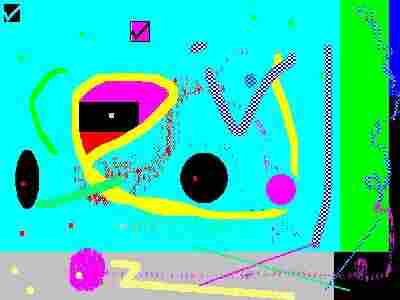3.e) Creativity
Creativity is another essential quality of living being. Keeping to the topic of human ability, everybody is creative to a greater or lesser extent, just like with intelligence and beauty.
To be creative refers to a person who is particularly talented in comparison to the average of the rest of the population. A slightly creative person is more creative than a very original cat!
A decent definition of creativity could be a subset of conditional intelligence, which means a group of essential relational functions with a high association of reliability. If the brain's functions responsible for creating logical relations often make mistakes, this would not be intelligence, but rather something else that the Global Cognitive Theory calls intuition; of course, if there were lots of errors, it would be called a lack of intelligence.
The creativity subset will be those functions that make the creation, design, invention, or imagination of new concepts more comfortable.
The demand for high reliability is paradoxical in creativity because it has not the same justification for a severe possible error of intelligence.
Not only an error is not considered something serious in creative processes, but mistakes are usual. Nonetheless, given that creativity requires various successive operations to exist if elemental functions make errors, it is not very likely that the result will be correct; there can be new creations due to chance but not creativity.
However, we should not lose sight of the fact that an absolute conceptual definition of creativity is not easy, as we have also previously said, language does not require a high degree of reliability. Occasionally, a significant cause behind artistic creations is a defective function in sensorial perception.

On the other hand, the creativity deal within a complex area of intelligence; that is, it uses many packets of elemental tasks operating with a high degree of reliability. Therefore, sometimes, it is unavoidable to make some errors.
Consequently, a more precise definition of creativity would be complex functions of intelligence supporting the capacities of:
Carrying out extrapolations and estimations of the result, given the existing relations
Delimitating the limits of the parameters involved
To detect changes in the variables caused by a variation of the settings; otherwise said, qualitative implications for quantitative changes
Simultaneous management of various dimensions
To perform scale or model variables alterations and returning to the previous scale or model variable in the appropriate point of the corresponding original settings. In other words, the concepts related to the different types of associations defined in Set theory –a branch of mathematical logic.
Thoughts related to advanced statistical such as average value and a standard value, different value and extraordinary value, and a case or typical value
Plausibly, to be creative in a specific subject, it is not necessary to have all the previous functions. Nonetheless, aside from them, it should also be present both elemental capacities associated with a topic and the specific abilities not linked to general reasoning, like dealing with music or sports.
Consequently, smart people tend to be more creative, and it would be more apparent the more intelligent someone is. Of course, it occurs the other way around (the less intelligent, the less creative), but it is not as strong because of the intelligence associated and the specific capabilities.
A person can be brilliant and not creative in a subject and vice-versa.
Nevertheless, the colloquial language practically depicts these meanings perfectly. An intellectual genius means a person very creative, but another one known for creativity in a subject implies only that is reasonably intelligent.
The next section talks about the genetic structure of reasoning. Regarding the innate nature, creativity has two sides to it; one the one hand, being part of intelligence, and on the other hand, dealing with the specific subject of creativity, such as music for example.
Continuing with the music example, the Verification of genetic information method (LoVeInf) does not apply to the genetic information of both progenitors associated with music (Union in Set theory). However, in the transmission of musical creativity, the rules of the LoVeInf method will apply for the relational functions being part or a subset of general intelligence, only showing the capacities derived from genetic information that is present simultaneously in the two sources of information received from the progenitors (intersection)
